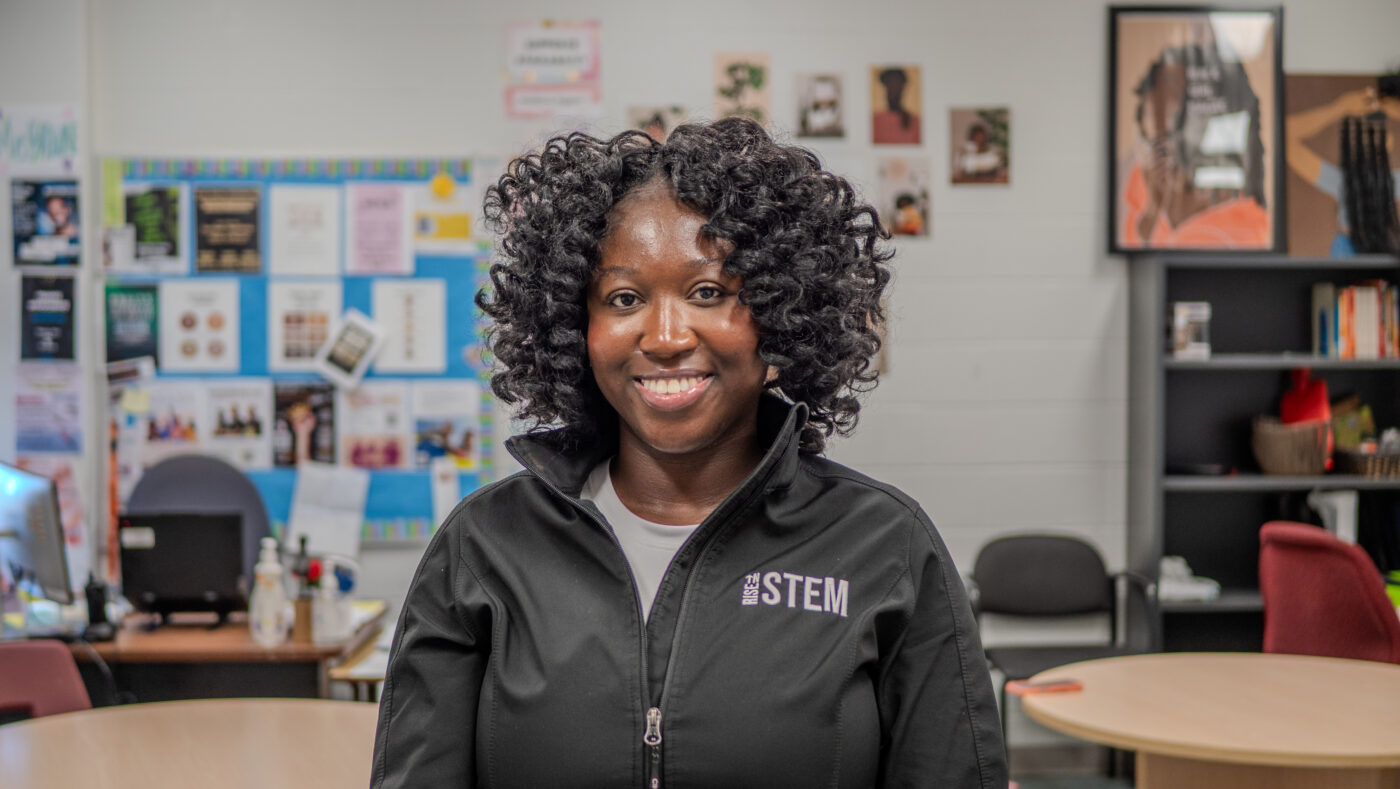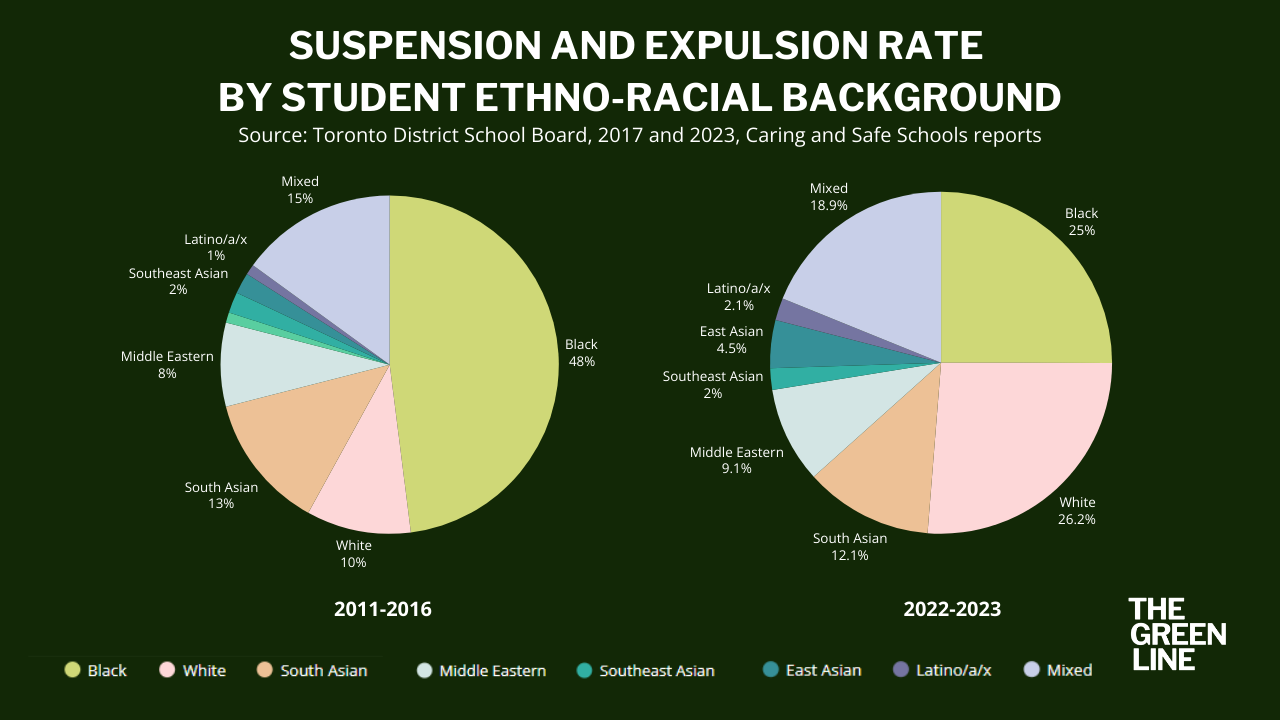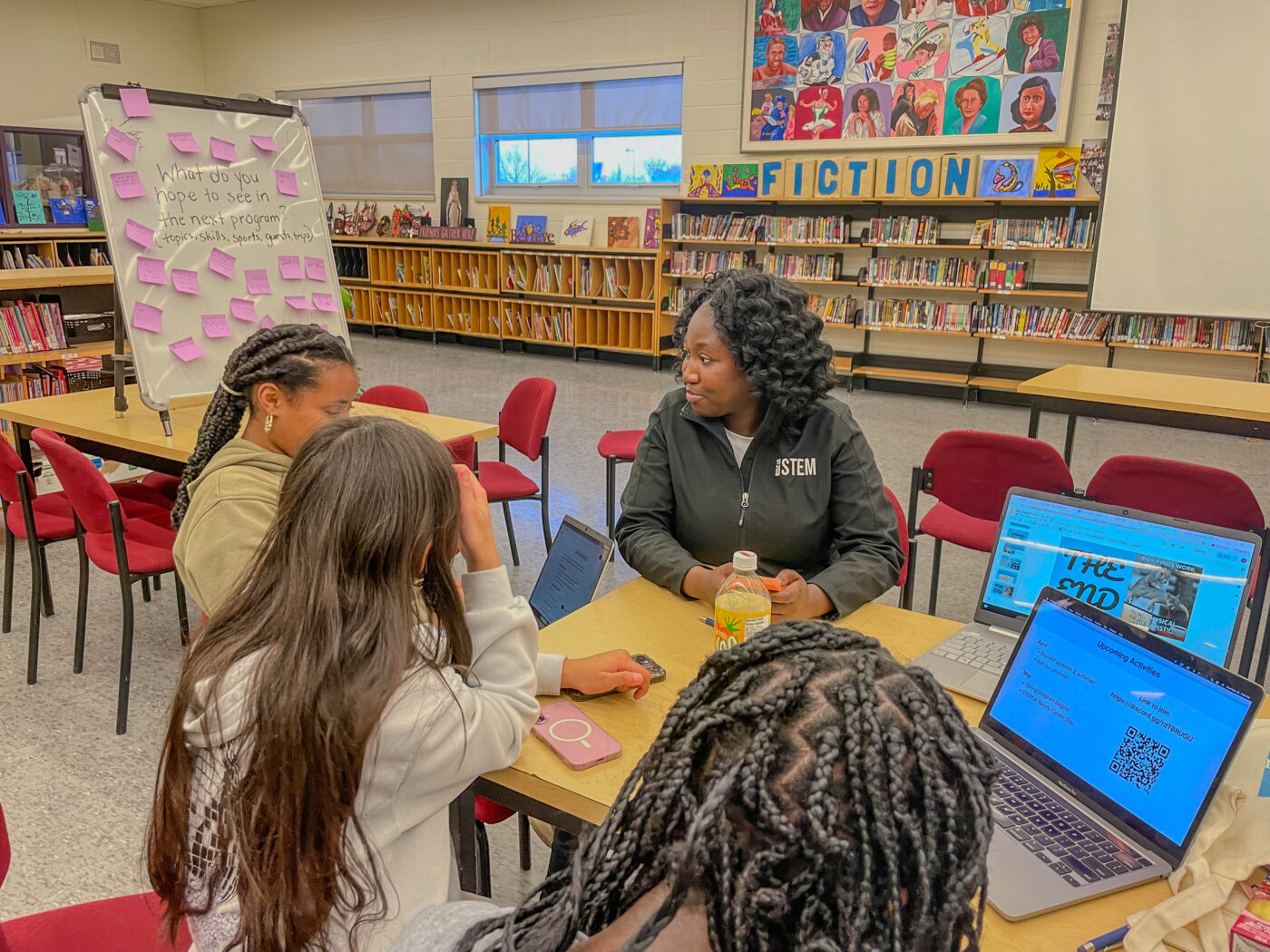THE GREEN LINE
ORIGINAL STORY
How ONE ORGANIZATION IS HELPING UNDERSERVED YOUTH ACCESS STEM THROUGH SPORTS
The Green Line team visited St. Dorothy Catholic School to learn how one local group is teaching underserved youth about unique career pathways in STEM.

Irene Duah-Kessie, executive director of Rise in STEM, sits inside a classroom at Monsignor Percy Johnson Catholic Secondary School in West Humber-Clairville.


Amanda Seraphina James Rajakumar
Indian immigrant with a post-grad in journalism from Centennial College. Now living in Grange Park, meeting new people, and hearing different stories. Has four names, so it’s a pick-your-player situation.
April 18, 2025
TIPS ON MAKING STEM ACCESSIBLE THROUGH SPORTS
- Work with schools to set up afterschool programming in the library and gym.
- Cater to students in grades seven and eight to open up opportunities in STEM before they have to pick between applied and academic courses in grades nine and ten.
- Run two-hour programs — one hour to play sports and one hour to learn of different career pathways using STEM in sports, such as performance analytics, equipment design, etc.
- Invite professionals from different STEM fields in sports as guest speakers.
- Take students on field trips across the city to see representation in STEM fields, like strengthening coaches at Maple Leaf Sports and Entertainment (MLSE) Centre.
Science doesn’t just have to be in a lab — it can be on the court, too.
In West Humber-Clairville, Rise in STEM is teaching underserved youth that STEM can be used in different areas of their lives. The grassroots organization defines “underserved” as racialized and newcomer youth or those from lower-income backgrounds.
Irene Duah-Kessie grew up in West Humber-Clairville, a neighbourhood whose second-largest visible minority group is Black, making up 18 per cent of the population. She says Black residents here lack opportunities to pursue STEM — that is, science, technology, engineering and math — which encompasses fields that encourage innovation, problem-solving and critical thinking.
When starting her bachelor’s degree in life sciences at McMaster University in 2012, and while working on her master’s degree in sustainability management at the University of Toronto in 2017, Duah-Kessie noticed a lack of diversity among her peers and professors.
“When I had gone into higher education, I had noticed really quickly that there [were] not many people that looked like me, particularly Black students in STEM,” she explains.

Pie charts on the suspension and expulsion rates of students, according to ethno-racial background, in the Toronto District School Board.

Duah-Kessie says that for Black youth, barriers to entering STEM fields start at school. More suspensions and policing of Black students lead to higher dropout rates. Between 2011 and 2016, 48 per cent of suspended students in the Toronto District School Board (TDSB) identified as Black. As of 2023, they accounted for 24.8 per cent.
Recently, the TDSB has been taking a closer look at anti-Black racism in its disciplinary actions through the Caring and Safe Schools team.

Irene Duah-Kessie, executive director of Rise in STEM, sits with a group of STEM Athletics program participants at St. Dorothy Catholic School, which is located at Martin Grove Road and John Garland Boulevard.

One major issue is the persistent streaming Black students into applied courses in high school, according to Duah-Kessie.
In Ontario, streaming is the act of dividing students according to their perceived academic ability. As students enter grade nine and 10, they can choose between applied courses that focus on practicality or academic courses that focus on theory. Those perceived to have lower academic ability are encouraged to take applied courses, but this can hinder their university applications, as students are required to have completed a minimum of six university preparatory courses, which are academic.
A 2023 Statistics Canada report shows that only 15.8 per cent of Canadian-born Black youth have a bachelor’s degree or higher.

Student participants in the STEM Athletics program play a basketball match at St. Dorothy Catholic School in West Humber-Clairville.

Because she saw a lack of Black representation in STEM while in university, Duah-Kessie launched Rise in STEM in 2019. The youth-led grassroots organization aims to help Black and other underserved youth learn about the varied career pathways in STEM.
In January, Rise in STEM launched STEM Athletics, a first-of-its-kind program in Toronto’s west end that teaches the science behind sports.

Abel Tesfaye, an eighth grade student at St. Dorothy Catholic School, sits inside the school gym, where participants in the STEM Athletics program play a basketball game.

The 12-week program for seventh and eighth graders at St. Dorothy Catholic School has 20 to 30 students attending every week. Participants spend time in the library during the program’s STEM-focused portion, learning about different career pathways, while they assess game strategy and play in the gym. They also learn about performance analytics, equipment design, the physics behind movement and more.
STEM Athletics also features guest speakers from different industries, and hosts workshops across the city, such as the Toronto Raptors Hack-A-Thon.
“I learned how to analyze data and track my findings," says Abel Tesfaye, an eighth grade student at St. Dorothy Catholic School.

Victor Antonio Moran, an eighth grade student at St. Dorothy Catholic School, sits inside the school library where the STEM portion of the Athletics program is run.

“I feel like [I like] the technology part because it's really interesting,” says Victor Antonio Moran, another eighth grade student at St. Dorothy Catholic School. “In the future, technology will be really important, and I feel like if we learn about it now, it will help us [to] be better for the future."
Bryan Addo, a former Division 1 athlete, is the program coordinator of STEM Athletics. He says that through the program, students visit the Maple Leaf Sports and Entertainment (MLSE) Centre, where they learn about the relationship between athletics and gaming, career pathways in e-sports and virtual reality, and game strategies. They also met professionals in sports with STEM backgrounds, such as strengthening coaches and staff on the e-sports operations team, who look like them.
“If you don’t see yourself in these areas, how would you possibly even want to be in these areas, right? I think representation is very very important, especially in the STEM fields,” Addo says.
Looking ahead, Rise in STEM hopes to partner with more organizations to introduce STEM to different sports, like soccer and hockey, and launch programming in schools beyond Etobicoke.
Fact-Check Yourself
Sources and
further reading
Don't take our word for it —
check our sources for yourself.
Here's your chance to support the only independent, hyperlocal news outlet dedicated to serving gen Zs, millennials and other underserved communities in Toronto. Donate now to support The Green Line.